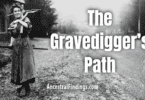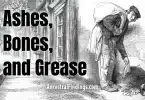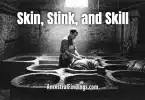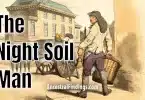Coal built the modern world. It powered trains, lit homes, fueled factories, and kept furnaces burning during the coldest winters. But that power came at a steep cost. For every train that ran and every hearth that glowed, miners were working deep underground, chipping away at rock, swallowing dust, and risking their lives with every shift.
Mining was one of the most dangerous and physically demanding jobs your ancestors could have held. For many, it wasn’t just a job—it was the only option. In coal towns scattered across America and Europe, mining was a way of life. Children were born into it, men grew old doing it, and women ran households that depended on it.
A World Below the Surface
Coal miners worked long hours in dark, narrow shafts. Early mining was done with hand tools—picks, shovels, and wheelbarrows—before machines slowly took over some of the labor. The air was thick with dust. Miners worked hunched over in tight spaces, sometimes crawling on hands and knees, lit only by candles or small oil lamps strapped to their heads.
They breathed air laced with coal dust and explosive gases. In deeper mines, the heat was suffocating. In shallower ones, water dripped from the ceiling, pooling underfoot. Some miners worked barefoot to avoid slipping. Ropes were used to haul tools and coal to the surface, and elevators were crude, often powered by donkeys or steam engines.
The work was hot, loud, and hazardous. Cave-ins, falling rocks, flooding, and explosions caused by methane gas were all part of daily life. Injuries and deaths were common, particularly in the 1800s and early 1900s, before safety regulations were implemented. Even those who avoided injury often developed “black lung,” a chronic disease caused by breathing coal dust for years. It left many gasping for breath by the time they reached middle age.
In the United States, the worst mining disaster occurred in 1907 at Monongah, West Virginia. Over 360 miners died in an explosion. Many were recent immigrants from Italy, Hungary, and other parts of Europe. The tragedy led to the establishment of the Bureau of Mines in 1910, marking the beginning of a gradual improvement in safety.
Child labor was also common. Boys as young as 8 or 9 worked in coal breakers, sorting coal by hand, often losing fingers or suffering lung damage before they reached adulthood. Women sometimes worked above ground, cleaning and processing coal or tending to the needs of entire mining camps. Daughters often married young and raised children while managing households under the ever-present shadow of danger.
Where to Find Miners in Your Family Tree
If your ancestors lived in states like Pennsylvania, West Virginia, Kentucky, Illinois, Ohio, or parts of the UK, there’s a good chance someone in the family worked in the mines. Census records from the late 1800s and early 1900s often list “miner,” “coal heaver,” “coal loader,” or “mine laborer” as an occupation. City directories, draft registrations, and death certificates also sometimes reveal this detail.
Mining companies often maintained employment records, some of which are still available in local archives or historical societies. Pay stubs, housing ledgers, and company-issued scrips (tokens used at the company store) are valuable pieces of genealogical evidence. Labor union records—especially those from the United Mine Workers of America—are goldmines for names, work history, and locations.
Mining accident reports, death records, and coroner’s inquests can also reveal the dangers your ancestors faced. Some local historical societies maintain databases of mining fatalities and injuries. And newspapers from the time frequently reported on explosions, collapses, and strikes—events that impacted entire towns.
Pay attention to community patterns. Mining towns often saw generations of the same families working for the same company. You might trace your great-grandfather, grandfather, and even great-uncles all listed at the same mine, living in company housing, shopping at the company store, and sending their kids to company schools. Churches and ethnic fraternal organizations (like the Slovak Catholic Sokol or the Italian Sons and Daughters of America) also formed around mining communities.
Some mines issued ID tags, called “brass checks,” to each miner. These tokens were hung on a board before entering the shaft and removed at the end of the day. In the event of a disaster, missing tags helped rescuers identify who was still underground. Occasionally, descendants still possess these tokens, which are passed down in family keepsakes.
Famous People Who Once Worked the Mines
You might be surprised by some of the well-known names who started out in the mines:
Herbert Hoover, the 31st President of the United States, worked as a mining engineer before entering politics. Though he wasn’t a coal miner himself, he spent time deep underground, experiencing the same dangers and pressures as the men he supervised.
D. H. Lawrence, the English writer, was born into a coal mining family in Nottinghamshire. His father was a miner, and his early works often reflected the harsh realities of mining life.
Mother Jones—the famous labor activist—became one of the fiercest advocates for miners’ rights. She organized strikes, marches, and gave fiery speeches across coal country, fighting for better pay and safer working conditions.
John L. Lewis, a coal miner turned union leader, headed the United Mine Workers for four decades. His work led to better conditions and stronger labor protections.
The Culture and Spirit of Coal Towns
Mining wasn’t just a job—it shaped entire communities. Company towns emerged around mines, featuring housing, schools, churches, and stores all controlled by the mining companies. While this created strong social bonds among workers, it also created dependency. Strikes or layoffs could shut down a whole town.
Company housing was often small and uniform, sometimes little more than wooden shacks built on hillsides. Rent was deducted from pay. Workers were usually paid in company scrip rather than cash, which could only be used at the company store, where the employer set prices.
Music, storytelling, and oral traditions helped mining families cope with the constant danger. Folk songs and ballads told of lost fathers, deadly blasts, and the fight for dignity. One well-known example is the song “Sixteen Tons,” made popular by Tennessee Ernie Ford, which reflects the feeling of being permanently in debt to the company store.
Despite the hardships, coal towns fostered tight-knit relationships. Neighbors helped each other with food, childcare, and shared grief. When disasters struck, the entire town mourned together. These stories of solidarity still echo in mining communities today.
Remembering the Hard Labor
If you discover a miner in your family tree, you’ve found someone who lived through one of the most grueling types of work imaginable. Whether they were immigrants starting over in a new country or born into the trade, these ancestors carried the weight of an industrial world on their shoulders.
They may not have left behind grand estates or famous names, but they left behind something just as important: the story of perseverance, strength, and survival. Their work powered the rise of modern industry and helped shape the nation’s economy.
Mining was a dangerous, dirty, and often thankless job. However, these workers persevered, driven by the hope of providing for their families and building a better future. It’s a legacy worth honoring.
In our next episode, we’ll shift from the underground world to the tanning pits—another difficult, smelly, and forgotten profession that helped shape daily life for generations.




